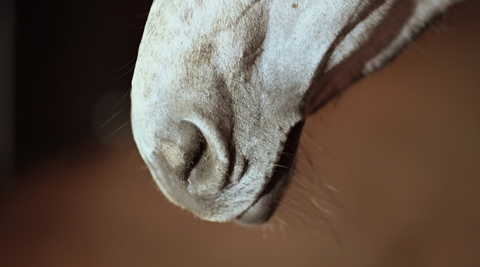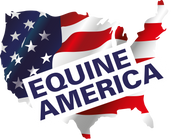Nose Bleeds, Rhinos and Endoscopes!

What should you do if your horse has a nosebleed?
Firstly, don’t panic! It can look very dramatic, but most minor nosebleeds will stop within 10 to 15 minutes. In the meantime, keep your horse calm and quiet as excitement will elevate the blood pressure and cause further bleeding. Remember horses breath through their nose, so don’t try to pack it as this will obstruct their breathing. Next, we would recommend you contact your Vet for advice. Your Vet will likely ask you questions such as: is the blood coming from one or both nostrils, how much blood has been lost, is this the first nosebleed, has the horse just exercised, is there an obvious injury or wound?
What causes nose bleeds in the horse?
Nose bleeds (also known medically as epistaxis) can happen for a variety of reasons in the horse, including exercise induced pulmonary haemorrhage (EIPH), head trauma, ethmoidal haematomas and guttural pouch mycosis. Often, they are nothing to worry about, but they can also be extremely serious and as it can be difficult to tell what the cause of the nosebleed is, endoscopy is often required to confirm the diagnosis and source of the bleed. Once a diagnosis has been made the Vet can advise you on treatment options. Let’s discuss a few causes of nosebleeds.
Guttural Pouch Mycosis

The guttural pouch is fairly unique to the horse with only a small number of animals having this bit of anatomy, including tapirs and some rhinos! The guttural pouch is an outpouching of the Eustachian tube, the tube that connects the nose and mouth, and is normally filled with air. Guttural pouch mycosis is a fungal infection that erodes important nerves and blood vessels within the guttural pouch, for example the internal carotid artery, which can then rupture and bleed, which is extremely serious and sadly can be fatal.
Ethmoidal Haematomas
Ethmoidal haematomas are a lump that can grow in the ethmoid region of the nose and is relatively rare.
Exercise Induced Pulmonary Haemorrhage
Bleeders (or to use the medical name Equine Induced Pulmonary Haemorrhage (EIPH)) is a term you may have heard but what does it mean?
EIPH is bleeding that occurs form the lungs of horses during exercise. Horses suffering from EIPH are also known as bleeders.

EIPH affects most racehorses. This condition can also affect horses in other high-intensity disciplines such as polo and eventing but can be seen in other performance horses such as show jumpers.
EIPH is characterised by blood in the airways seen post-race (or high intensity exercise) on endoscopy, more severe cases may have a nosebleed. EIPH can cause poor performance and is not only a huge cost to the racing industry but can also have welfare implications.
EIPH is thought to be caused by stress failures of the pulmonary capillaries due to high blood pressures leading to burst blood vessels. Bleeding then occurs into the airways, which can then cause inflammation and further haemorrhage.
Endoscopy
Endoscopy is performed by a Vet and involves passing a long thin camera called an endoscope up the nose into the back of the throat and then through the epiglottis down into the trachea and lower airways. This allows the vet to visualise where the blood is coming from, and samples can also be taken if required. Depending on the cause, the treatment options will vary.
Nutritional support may be beneficial, with the use of ingredients such as antioxidants and supporting the horses own anti-inflammatory processes with omega 3 fatty acids.

References:
Hinchcliff et al. (2015) Exercise Induced Pulmonary Hemorrhage in Horses: American College of Veterinary Internal Medicine Consensus Statement. J Vet Intern Med 2015; 29:743-758
Rendle (2016) Exercise Induced Pulmonary Haemorrhage: Risk Factors, Clinical Signs and Prevention. Vet Times
 Skip to content
Skip to content

